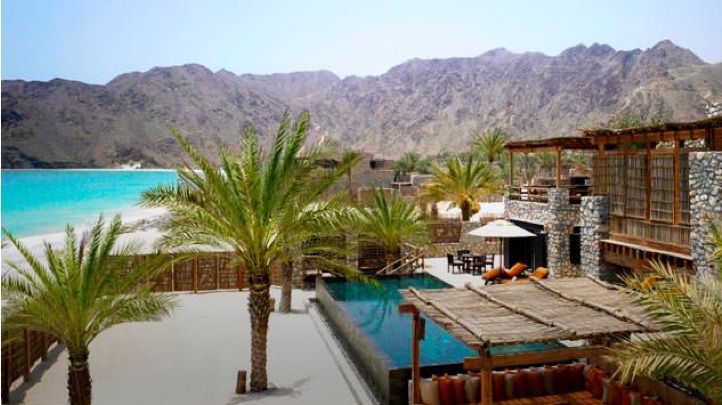
The Arabian Travel Market (ATM) in Dubai, and the Global Wellness Institute (GWI) just released data on recent growth and unfolding trends in the Middle East/North Africa (MENA) wellness tourism and spa markets.
Despite security concerns for countries like Egypt, Israel, Jordan, Morocco, and Tunisia, MENA’s wellness tourism revenues grew 6% annually from 2013 to 2015 (from $7.3 billion to $8.3 billion), exactly on pace with global growth rates. And MENA’s spa market grew even faster: annual revenues jumped from $1.7 billion to $2.1 billion, or 10% annual growth—five times faster than the average global growth rate of 2%.
The research reveals that MENA is a very unique wellness tourism market: for example, globally, only 33% of wellness travel revenues come from inbound tourists, but in MENA, the inbound spend accounts for 68% of the market. And the UAE remains the regional powerhouse, with a wellness tourism market now nearly two times bigger ($2.7 billion) than its closest competitor, Morocco ($1.5 billion)—and a spa market roughly three times larger ($742 million) than #2 market, Saudi Arabia ($255 million).
Newly released data reports that MENA wellness travel is growing 6%, while spa revenues are growing 10%, annually. This is a unique market, with more than two-thirds of wellness travel spend coming from inbound tourists.
One of the fastest-growing global wellness markets (now worth $119 billion), but the MENA “wellness living” market is just getting started (worth $500 million). Growth lies ahead, and the focus is strongly mixed-use: part hospitality, part wellness residence concepts, like MAG of Life’s partnership with well-building pioneer DELOS, for the coming Life Creek Resort in Dubai, which includes wellness residences and a wellness hotel. Six Senses Gammarth, Tunisia, where the resort + residences celebrate Tunisia’s rich Berber, Ottoman, and Arab cultural and wellness history, is another example.
Luxury Wellness 2.0
Over-the-top luxury will remain crucial to the MENA wellness tourism brand, but the next “luxury wellness” chapter will go deeper than spectacular one-upmanship design, with a bigger property focus on everything from professionals trained in lifestyle change, stress reduction, mental wellness, and indigenous traditions/medicines to a needed focus on environmental and social consciousness. The wellness angles will get more creative and meaningful: like the Oasis Eco Resort (coming to Abu Dhabi, 2020), billed as “the world’s greenest resort”, with everything from a wildlife biology department to guests foraging for organic produce.
A Happiness Focus
Nations are increasingly looking beyond GDP/economic growth, to focus on happiness, measuring and addressing citizens’ total wellbeing from social connection to healthcare access. The UAE is a trailblazer, with a national happiness initiative and the world’s first Minister of Happiness. This could cast a positive “halo” for the nation’s wellness tourism, and countries in the region/worldwide will watch how happiness initiatives might impact everything from healthcare costs to social trust.
Evolving Medical-Wellness Destinations
The GWI typically cautions that medical and wellness tourism concepts and promotion should be kept separate. But the Middle East is a special case, with more unique and blended medical-wellness (and cosmetic surgery and wellness) concepts and opportunities ahead. One major example: Dubai Healthcare City, currently a four-million-square-foot healthcare zone with a focus on elective/aesthetic procedures, but with a Phase 2 goal of becoming the “world’s biggest wellness center,” complete with wellness hotels and residences.
Workplace Wellness Growth
While workplace wellness is now a $43 billion global industry, with an average 9% of workers worldwide covered by some form of wellness program, the MENA region lags: only 7% of workers (91 million) fall under a workplace wellness program, representing a nascent market of $1.1 billion. The future: a growing focus on employee health in rapidly growing Gulf countries such as Saudi Arabia, Qatar, and the UAE, where obesity and chronic disease are skyrocketing. This will boost all wellness sectors: from fitness and healthy food to the healthy meetings, conventions, and travel markets.
Hot Potential for Hot Springs
Tunisia, Morocco, Algeria, and Iran all have extensive natural thermal/mineral springs resources without major hospitality/tourism infrastructure to support them. With a renaissance in authentic hot springs bathing worldwide, development in those nations looks to heat up.
Domestic Wellness Travel Growth
A host of forces, like lower oil prices, currency depreciation, and travel bans from (and “perception” issues with) the US, are poised to slow outbound MENA wellness travel growth. Meanwhile, economic slowdowns in key source countries like Saudi Arabia, Russia, and China—and security concerns in places like Egypt, Israel, Jordan, Morocco, and Tunisia—are negatively impacting inbound travel. While international MENA wellness tourism is still growing, catering to the domestic and inter-regional wellness tourist and their cultural and religious sensitivities will become more paramount.
About the Global Wellness Institute: The Global Wellness Institute (GWI), a non-profit 501(c)(3), is considered the leading global research and educational resource for the global wellness industry, and is known for introducing major industry initiatives and regional events that bring together leaders to chart the future. GWI positively impacts global health and wellness by advocating for both public institutions and businesses that are working to help prevent disease, reduce stress, and enhance overall quality of life. Its mission is to empower wellness worldwide.
Arabian Travel Market (ATM) is the leading international travel and tourism event in the Middle East for inbound and outbound tourism professionals. ATM attracts around 40,000 industry professionals, agreeing on deals worth US $2.5bn over the four days.